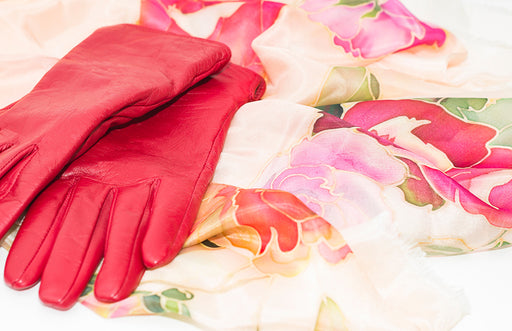How to Get Rid of Moths at Home

Moths can be found in every state in the US and are prevalent in Europe and Canada. Having moths in your home is not uncommon. These moths can get in through cracks around doors and windows or even via your ventilation system. Moths may even lay eggs on secondhand furniture or rugs that later hatch in your house.
In the larvae stage, these insects can wreak havoc on your house. Flying adult moths are equally as annoying if they infiltrate your walls! Although not all moth larvae will damage fabric, carpeting, or pantry items, some species are particularly problematic in houses.
Wondering how to get rid of moths at home? Below, we will discuss how to detect moths at home, why they appear, and how to fight them. We’ll also discuss where to locate moths and how to protect your home from moths in the first place!
What causes moths in the house?
First and foremost, what causes moths to enter your home? Female Moths are usually attracted to animal-based fibers or a dry-goods food source in order to lay their eggs and give their larvae a hearty feast once the eggs have hatched. Moths like undisturbed areas, preferably in dark corners, behind furniture, and other sheltered areas within your home.

Moths can get into your home through cracks near your doors or window sills. Open doors and windows are another common way that moths enter a house. They can also get in through your ventilation system, air ducts, or window A/C units.
Sometimes moths enter homes in the egg stage from elsewhere. For example, if you buy a used rug at a garage sale, it could have moth eggs in its fibers. When these moth eggs hatch as larvae they eat the natural fibers nearby. Then, they develop into adult moths, and the cycle repeats.
Houses that have been recently constructed may also have inherent moth infestations. These hidden infestations are usually from eggs laid by the previous generation of moths when the home was still being constructed and was exposed to the open air. New homeowners are sometimes baffled to find moths seemingly hatching from the walls or closets
Basically, if there is something in your home that moths are attracted to, they will look for a viable entry point. Food sources that attract moths include wool, natural fibers, leather, feathers, felt, fur, and certain dry goods or pantry items.
Most Common Causes of Moths in a Home Include:
- Food sources - such as wool, silk, leather, or grain items
- New construction - homes that were exposed to the open air during the summer months
- Open windows or cracks - anywhere that provides an easy entry point
- Home left empty for a long period - when homeowners are on vacation or away
- Purchasing secondhand furniture or rugs - eggs stuck to fibers can hatch and mature
How to detect moths at home?
Detecting moths in your home is often fairly easy. Bare spots or holes in your clothing, drapes, or carpets are a major giveaway. You may also notice casings from moth larvae or dead moths near the windows, lighting fixtures, or air vents.

Finding tiny moth eggs can be more difficult! They are hardly visible to the naked eye and are covered in a sticky substance that lets them cling to natural fibers in clothing, carpets, fabric, or furniture.
What types of moths can you find in a home?
So where do moths come from? Do moths eat clothes all of the time, or can they eat other things? Well, it all depends on the type of moth.
There are three common types of pest moths in houses in the United States and Canada. These are Webbing Moths, Casemaking Moths, and Pantry Moths. Pantry Moths are sometimes also called Meal Moths, while Casemaking and Webbing moths are commonly called Clothes Moths. Both species can be found in homes and may cause destruction.
Most Common Types of Moths in House Spaces:
- Pantry Moth (Indian Meal Moth)
- Clothes Moth (Webbing and Casemaking Moth)
Webbing and Casemaking Clothes Moths eat fur, leather, feathers, felt, wool, silk, and other animal based fibers in their larval stage. Indian Meal Moths (Pantry Moths) eat grain, birdseed, cereal, beans, nuts, flour, and other dry goods often stored in pantries.

Is your place attracting moths? How can you tell?
So how do you know whether or not your home is attracting moths? Some homes are more likely to attract moths than others. If you leave your doors or windows open at night, there's a good chance that moths will come on in. Additionally, homes with lots of natural fibers such as wool carpets or leather upholstery are more prone to moth infestation. Ask yourself these questions:
- Do you leave your windows open a lot?
- Do you have a chimney or window A/C unit?
- Was your house recently constructed?
- Is your house often left empty?
- Have you forgotten to dust or vacuum lately?
- Do you have an abundance of undisturbed places in your home?
- Do you own fur, leather, wool, feathers, etc.?
- Have you bought any used rugs or furniture recently?
- Is your pantry stocked with dry food, including pet food?
- Are there any places in your home exposed to the outdoors?
- Do you often leave your garage door open?
- Do you have an attic where old furs, clothes, or furniture items are stored?
If the answer to one or more of these questions is yes, your house may be attracting moths. In some cases, a moth infestation might be out of your control. Even if you take proper precautions or don't have many natural fibers in your home, moth infestations are sometimes unavoidable.

How to get rid of moths at home?
Now, let's talk about how to get rid of moths! As you wage your war on the moths in your home, first you should identify their primary source. Where is the moth infestation coming from? Are you seeing adult moths flying around the lights, or have you noticed larvae chewing up your carpet?
So how to trap flying moths at home? If you see adult moths in your home, position Moth Traps . You want to catch the active adult male moths in the traps in order to reduce the breeding cycle and work to make your home less moth-friendly with deterrents. The traps also enable you to monitor for the presence of moths and gauge the size of the infestation.
For a larger infestation you may like to read our Clothes Moth Kit Guide for information on how to use chemical products in line with our Traps to rid your home of Clothes Moths.
If you have a Pantry Moth infestation you will want to use Pantry Moth Traps and non-toxic moth killing solutions which are safe for use in food areas. You can read more information in our Pantry Moth Kit Guide.
Getting Rid of Moth Larvae and Eggs
Moth larvae are pretty gross and can be horrifying to find in your clothing! To get rid of moth larvae and eggs, you can freeze clothing items for 72 hours. Then, wash, dry-clean, or launder them. If the moth larvae are in your carpet, vacuum or clean any infested areas thoroughly and position Carpet Moth Traps to monitor and catch the adult male flying moths and help break the breeding cycle. Our Carpet Moth Kit Guide gives you further information on dealing with larger or persistent moth infestations that may require chemical sprays.

Preventing Future Infestations
Prevention is the name of the game when it comes to moths. Cedarwood is a reliable way to keep moths from coming into your house. Moths hate the smell produced by cedar! Herbal moth-repellent sachets with clove, mint, and rosemary are also good. They smell nice to people, but moths hate them!
Are moths dangerous?
No, most moths are not dangerous to people or pets. Clothes Moths and Pantry Moths are destructive to your clothing, textiles and food, but do not pose harm to humans or animals.
What are high-risk areas for a moth infestation?
All species of moths tend to prefer quiet, dark, undisturbed places. In these peaceful nooks and crannies, they will lay eggs. These eggs can then hatch into larvae that eat dry goods or natural materials and fabrics.
The most high-risk areas in homes are attics, pantries, closets, and garages. However, dark areas in basements or an unused room may also attract moths. Anywhere that is quiet and not subject to regular foot traffic could be prone to moth infestation.
- Areas that Moths Love:
- Quiet places
- Dark places
- Attics
- Garages
- Chimneys
- Basements
- Closets
- Gaps beneath furniture
- Empty rooms and houses
- Houses under construction
- Cellars
What attracts moths to your house?

Generally, moths are attracted to dry goods in the pantry, animal based fibers in fabrics, and quiet areas in the home. Moths may also inhabit homes while people are on vacation. New construction and homes being renovated are often targets for moths as well.
Moths are also attracted to:
- Fur
- Wool
- Feathers
- Leather
- Felt
- Silk
- Grain
- Cereal
- Flour
- Nuts
- Birdseed
- Pet food
- Dark, quiet places
How do moths get into my house?
Moths can get into your house through gaps in your doors or windows. They may also come in by laying eggs on used furniture or via an air conditioning unit. If light can get through a small gap or crack, it is large enough for a moth to get into.
How to prevent the moths from getting into your house?
To prevent moths from getting into your home, use deterrents like herbal sachets, natural moth repellents, and cedarwood. A range of products can be used to repel moths. Moth Traps are another good option.
At night, close your doors and windows. Hang moth repellent sachets and Moth Traps near open chimneys, ducts, or window A/C units. Always clean any used furniture or rugs thoroughly before bringing them into your home.
Why are there Moths in the Attic?
Moths like to lay eggs in dark, quiet, undisturbed spots. As such, if you have been finding little moths in the house, they might be coming from the attic. Since identifying where moths are coming from is a key component in getting rid of them, considering every possibility can be helpful.
How to Tell if there are Moths in the Attic
First, you will need to confirm the presence of moths in the attic. Have you been noticing an unusual amount of small moths in your home? Do you have an older home? Is it late spring, early, mid, or late summer? Have you checked everywhere else in the house already? Is there anything stored in your attic? If you find yourself answering yes to these questions, you might want to go ahead and check out your attic.
There are many different kinds of attics. If you have an empty, unfinished, or scuttle attic that is hard to access, the presence of moths is less likely. After all, moths need a food source. With that being said, if your house is older, you might want to check anyway.
If you have a partially or fully furnished attic, especially if there are things stored there, you should check for moths. Clothes Moths love animal based fibres. Bedding, clothing, costumes, or any other items made of natural materials, could be a food source for moth larvae. Even decorations could attract them!
Check for moth larvae in baskets, boxes, dressers, wardrobes, chests, and anywhere you may have enclosed, dark storage spaces. Even old Christmas decorations should be investigated. Did you decide to save flour ornaments or a gingerbread house last year? This could attract Pantry Moths. If you see moth larvae casings, dead moths, live adult moths, or live larvae in your attic, it's time to take action to eliminate the problem.
Dealing with Moths in the Attic
If you have noticed little moths in the house you will need to eliminate the source of the infestation. If you have found live larvae or see signs of moths in the attic, firstly thoroughly clean, wipe down surfaces and shelving, and vacuum everywhere including nooks and crannies. Place Moth Traps in areas where you have seen moths or suspect moths are present.
Can You Get Pantry Moths in the Attic?
What about pantry moths in the attic? Edible dry goods stored in an attic can definitely attract pantry moths. Also, seeds or grains brought into your attic by squirrels, mice, and even birds may attract moths.
Final Thoughts on Moth Prevention

Hopefully, these tips have been helpful! Remember, the best way to keep moths at bay involves preventing them from entering your home in the first place. If these pesky insects have invaded your home already, identifying their source is critical. You should eliminate any moth larvae you find as soon as possible to minimize damage. Many natural materials repel adult moths. Cedarwood is your best friend if you want to keep moths from being attracted to your house!
About MothPrevention
MothPrevention® speak to customers every day about their clothes moth issues - clothes moths are a species that are ever increasing and that can cause significant damage to clothes, carpets and other home textiles.
To date, we’ve helped over 250,000 customers deal with their moth problems. We have developed professional grade solutions including proprietary pheromones and trap design, not available from anybody else in the USA.





